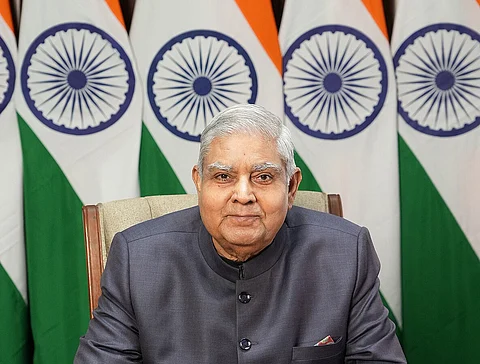

The recent resignation of Vice President and Rajya Sabha Chairman Jagdeep Dhankar has prompted a constitutional obligation to promptly fill the resulting vacancy. The Election Commission is expected to commence the necessary procedures in the near future, as mandated by the Constitution. Dhankar stepped down due to health concerns, leaving two years remaining in his term, which began in August 2022 and was set to conclude in August 2027. He is only the third Indian Vice President to resign before serving a full term, following Varahagiri Venkata Giri (VV Giri), who vacated the position on July 20, 1969, to run for president after the death of Zakir Husain, and R. Venkataraman, who resigned in July 1987 after being elected president.
Constitutional Framework
The election process is governed by Articles 63 to 71 of the Constitution and the Vice-President (Election) Rules of 1974. Article 68, Clause 2 specifies that an election to fill the vice-presidential vacancy must occur “as soon as possible” after the office becomes vacant. The newly elected candidate will serve a complete five-year term starting from the date they assume office. As the second-highest constitutional office in India, the Vice President serves a five-year term but remains in office until a successor is sworn in.
In the interim following Dhankar’s resignation, senior Rajya Sabha members will oversee House proceedings. Per parliamentary rules, the deputy chairperson of the Rajya Sabha will act as the interim chairperson. Presently, Harivansh Narayan Singh, appointed in August 2022, will fulfill this role until the new Vice President is elected.
The Constitution stipulates that if the office of the Vice President becomes vacant due to death, resignation, removal, or any other reason prior to the completion of the five-year term, it must be filled "as soon as possible."
Election Process
The election is carried out by an electoral college composed of members from both Houses of Parliament — Lok Sabha and Rajya Sabha — using a proportional representation system via single transferable vote and secret ballot. Once the Vice President's position is vacated, political discussions across party lines are anticipated to escalate. The electoral college of 788 Members of Parliament, which includes 543 from Lok Sabha and 245 from Rajya Sabha, will elect a new Vice President. The Election Commission is expected to announce the election schedule shortly.
Vice President Tenure
The Vice President is appointed for a five-year term from the date they assume office. However, they will continue to serve beyond the term's expiration until a successor is appointed. The Constitution lacks a specified succession method for filling the Vice Presidency in cases of death, removal, or resignation, making a new election necessary. Nevertheless, the Deputy Chairman can temporarily oversee Rajya Sabha duties during this period.
According to the Presidential and Vice Presidential Elections Act of 1952, the Election Commission may issue a notification for the election no sooner than 60 days before the outgoing Vice President's term ends!. The election timeframe is organized so that the new Vice President can take office the day after the previous term ends.
The authority to conduct Vice Presidential elections lies with the Election Commission of India under Article 324 of the Constitution. The election process adheres to the rules set forth in Article 66(1), which mandates a proportional representation system utilizing a single transferable vote, with voting conducted by secret ballot.
To be eligible for the Vice Presidency, candidates must be Indian citizens, at least 35 years old, and qualified to be members of the Rajya Sabha. They must not hold any position of profit under the government at either the central or state level, or under any local authority controlled by these governments.
Nomination Requirements
Candidates must submit nomination papers, as outlined in Form 3 of the Presidential and Vice-Presidential Elections Rules of 1974, signed by at least 20 electors each as proposers and seconders. These nominations are accepted by the Returning Officer between 11 AM and 3 PM on designated days, and candidates must also make a security deposit of Rs 15,000.
Polling for the Vice Presidential election typically occurs in a designated room within Parliament House. Unlike the Presidential election, where votes from various legislative bodies carry different values, each vote for Vice President holds equal weight.
Voting Mechanics
The Vice Presidential election utilizes a proportional representation system through a single transferable vote, allowing electors to rank candidates based on preference. To win, a candidate must secure a required quota of votes equivalent to 50 percent of the valid votes cast.
